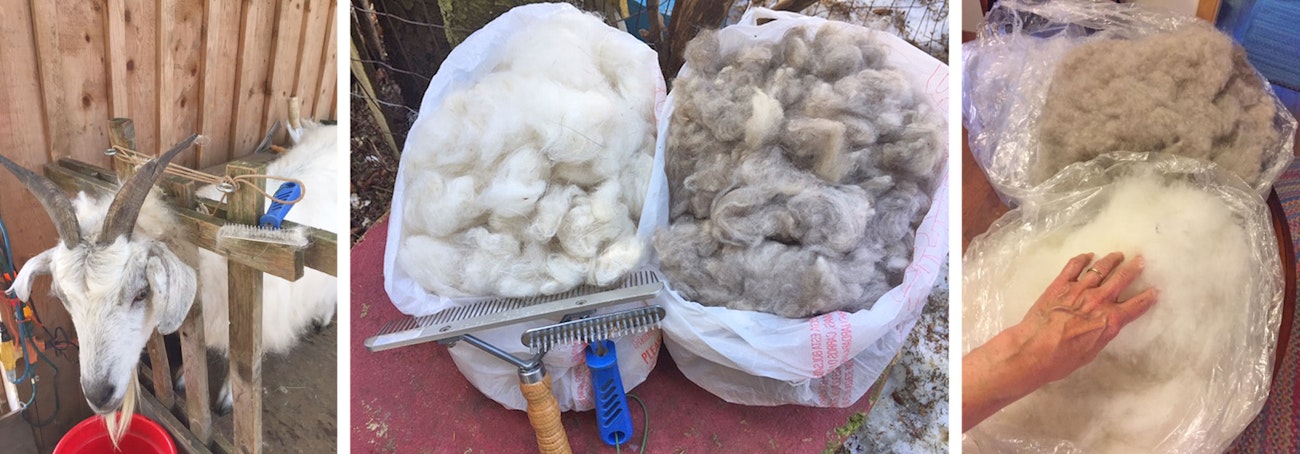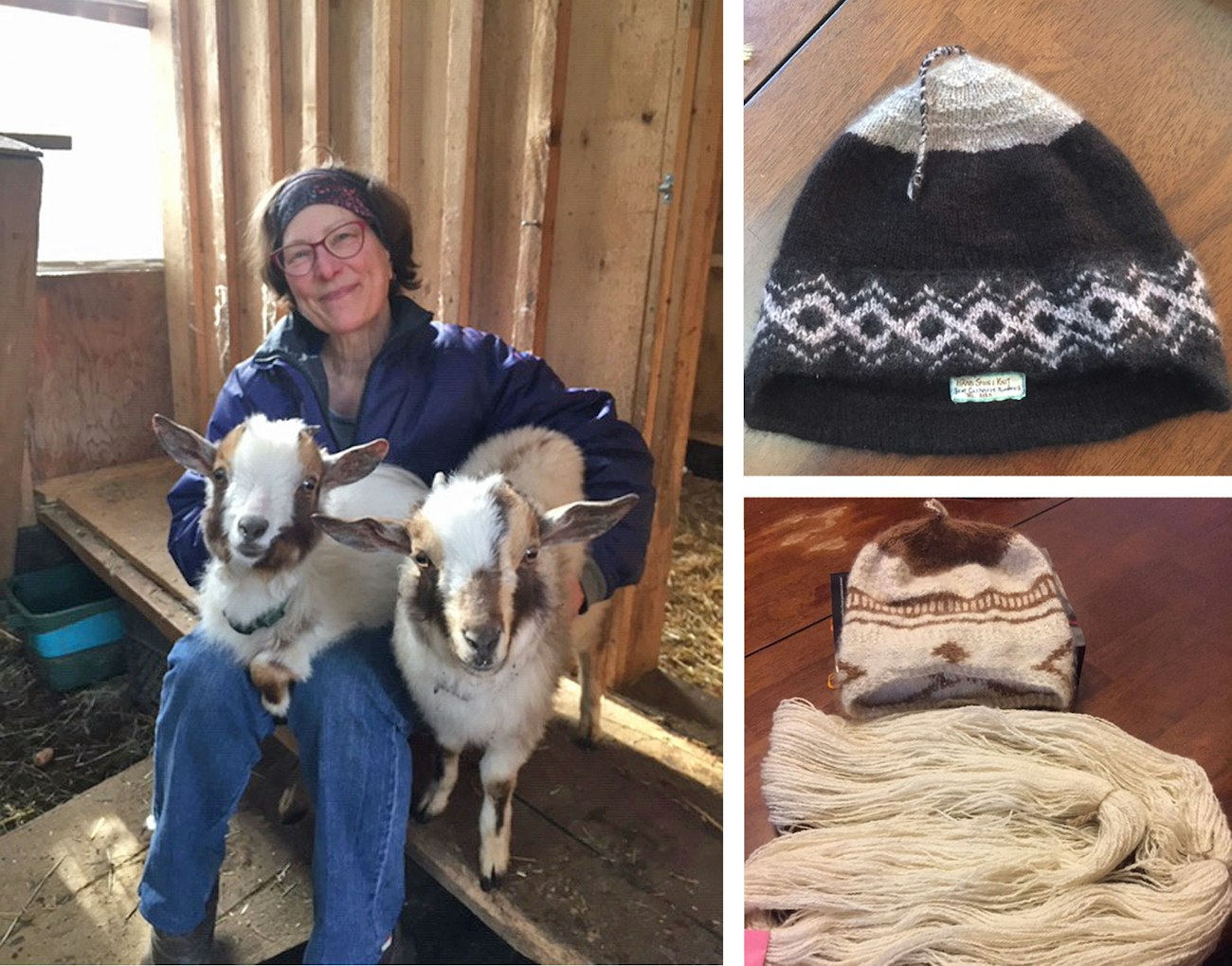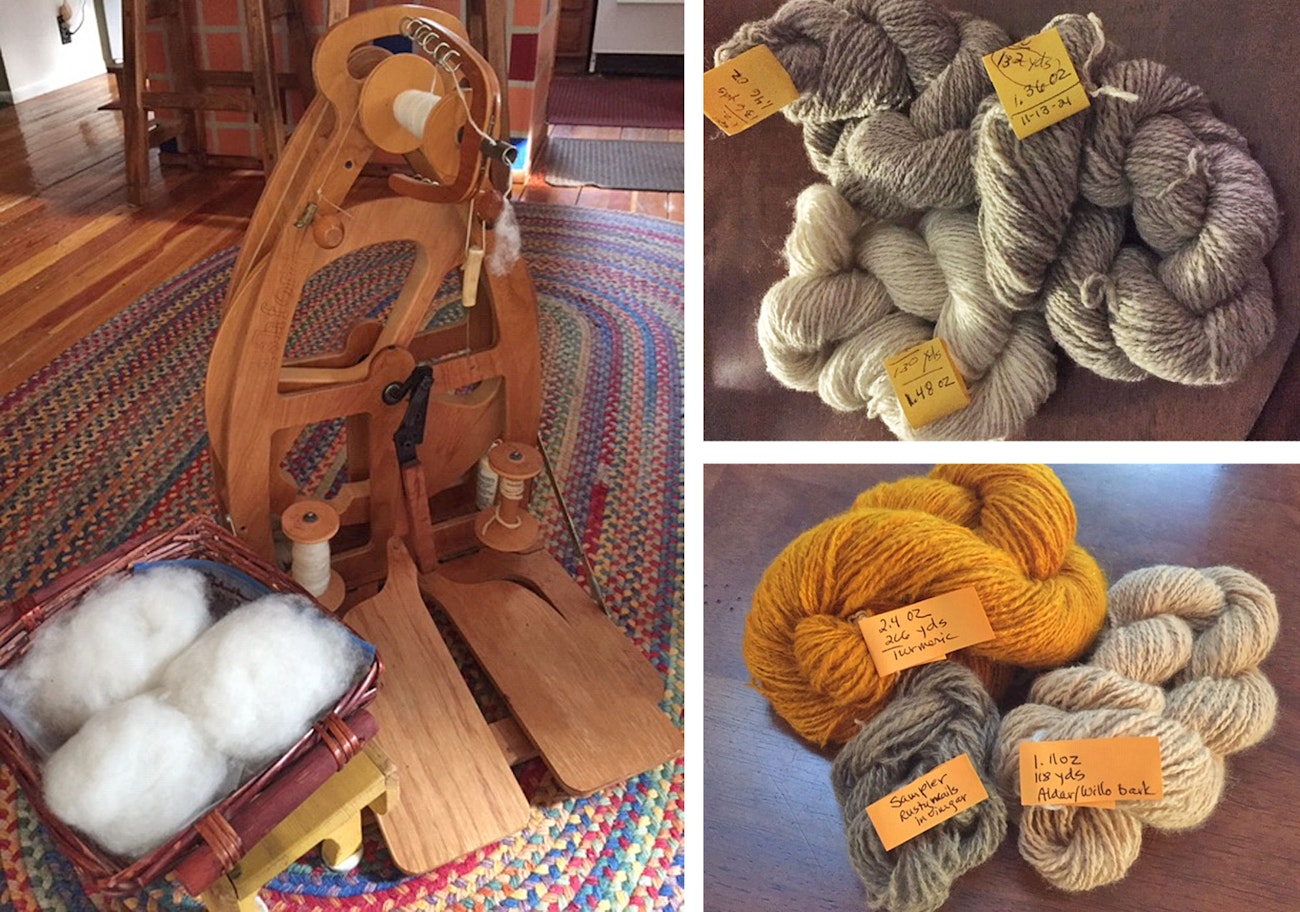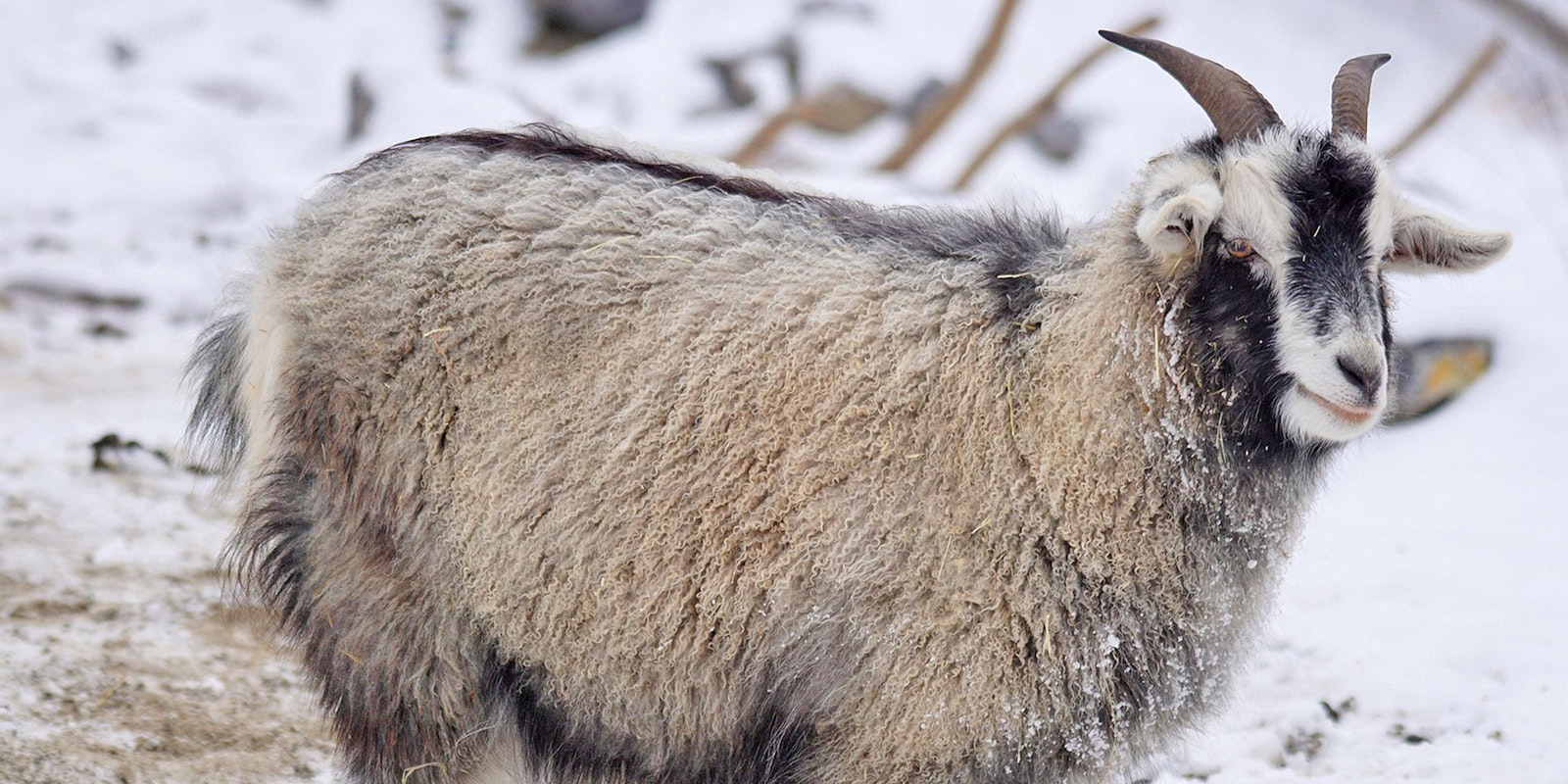There is a wild mountain goat that lives in the coastal regions of southeastern and Southcentral Alaska. In the spring, as their winter coats begin to shed, these goats rub their backs against rocks and trees. A friend of mine who worked remotely for the Fish and Game department gathered up a bunch of this mountain goat hair from some shrubbery near the beach. She meticulously picked it clean and gave it to me to wash and spin. It was very waxy and was an honor to spin!
Domestic Goats in Southcentral Alaska
I got my first two doe goats as five-month-old kids eight years ago from Lee Coray-Ludden, who was breeding for cashmere. I’m glad I chose the girls, as they grew to be about 120 pounds. Wethers—neutered male goats—would have been even larger. These cashmere-type goats are very hardy and have very thick winter coats. You can either shear them or comb the hair out.
Raising goats in Southcentral Alaska is fairly easy, although Angora goats are less hardy than the goats that have been locally bred for our climate in the past few decades. Most people who raise goats here do so for milk and meat. There are large operations, such as an active milk-goat farm on Kodiak Island, but there are many more small backyard operations. The winters here are not super-frigid. Summers are mild, with average temperatures in the mid-60s. We are on the coast and do get a lot of rain, which goats don’t tend to like since they don’t have lanolin in their coats like sheep do.
In terms of diet, goats are like moose—they are browsers and eat wild indigenous plants and shrubbery. We have lots of shrub willow, alder, and elderberry. In the winter, they like to eat spruce branches and bark. I give my goats a handful of grain in the morning and they get timothy hay (a type of grass hay) in the evening. The Alaskan agriculture hub is in the Matsu and Delta Junction region, about halfway between Anchorage and Fairbanks. Most hay comes from there and includes timothy, alfalfa, and brome. Many locals also grow timothy hay fields.
 Amaris (black with a silvery gray undercoat) and Noel (white) are shown in their winter coats. Photos by Therese Lewandowski
Amaris (black with a silvery gray undercoat) and Noel (white) are shown in their winter coats. Photos by Therese Lewandowski
Shedding in Spring
Like our wild mountain goats, my cashmere-type goats start to lose their undercoat in the spring from late April to May. That’s when I coax them onto a stanchion with a bucket of grain to keep them happy. I then start combing them using wide-toothed dog-hair combs. The hair around the neck and front haunches is the softest and longest so I concentrate on that.
Cashmere is very lightweight. From each goat, I manage to comb out about ten ounces of fiber, including the guard hairs. I send it to Coyote Trail Farm and Fiber in Fairbanks to have it cleaned and de-haired. Noel, my white goat, has much more guard hair so her return is usually about five or six ounces each year. Amaris, a black goat with a silvery undercoat who looks like a typical cashmere goat, has cashmere like butter with much less guard hair and a return of about eight ounces.
 Left to right: Noel in her stanchion during combing, uncleaned combed-out hair and cashmere, and de-haired and washed cashmere. Photos by Therese Lewandowski
Left to right: Noel in her stanchion during combing, uncleaned combed-out hair and cashmere, and de-haired and washed cashmere. Photos by Therese Lewandowski
Branching Out
Two years ago, I decided that I wanted to try milking. I bought a Southcentral Alaska-bred Nigerian goat and her female kid. These are very affectionate pets but are not the most abundant milk providers. I bred the kid to a Nigerian billy that had cashmere potential. She had two kids, a boy (now a wether) and girl, in July 2023. They are full-coated with very soft downy hair that I combed out this spring.
 Therese with two of her kids, plus some of the hats she has made with fiber from her goats. Photos by Therese Lewandowski
Therese with two of her kids, plus some of the hats she has made with fiber from her goats. Photos by Therese Lewandowski
Spinning My Goats’ Cashmere
I have used Amaris’s fiber in its natural silvery color, and I have also dyed it dark brown or black using chemical dyes. The fiber from Noel, the white goat, presents many more dye opportunities. Along with chemical dyes, I have used alder and cottonwood bark to get a beige color, rusty nails in vinegar to get a shade of brown, and turmeric for a popping orange. For these colors, I have used alum and cream of tartar as a mordant.
 Therese spins and dyes her goats’ cashmere. Photos by Therese Lewandowski
Therese spins and dyes her goats’ cashmere. Photos by Therese Lewandowski
A Creative Love Affair
Spinning with my goat’s hair has been a creative love affair—the softness of the fiber cannot be overstated. Knitting with it is a joy, too! I enjoy colorwork patterns and have knitted many warm hats with my goats’ cashmere.
I have found that goats are easy to keep. They are a hardy animal, with large, friendly personalities!
Therese Lewandowski has lived in Homer, Alaska for about 40 years and has been spinning for about 30 years. She has two cashmere-type goats whose combed hair provides her with lots of spinning time. She also has three Nigerian Dwarf goats who provide fun and some milk.

